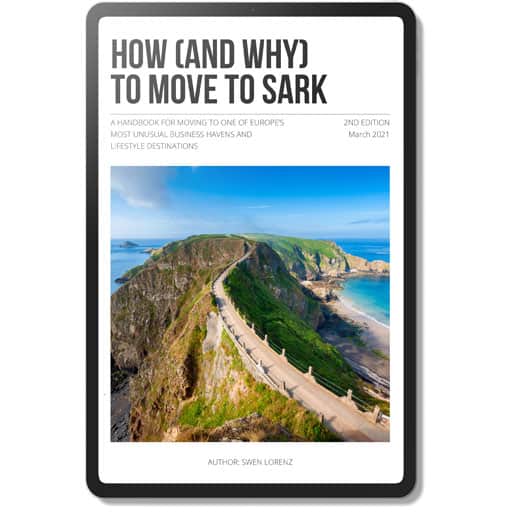You will only be able to sell your business once. Chances are, you’ll have spent years building it. There are plenty of reasons why you should be very strategic (and careful) about the process of cashing out.
With very, very few exceptions, selling up and cashing out takes much longer than you’d expect. If you give yourself a sufficient amount of time, you can actually maximise the money you get for your business.
“Up to two years of preparation REALLY helps”, recommends Xenia Ilyasova, director of London-based advisory firm Cavendish Corporate Finance whom I met at a dinner with entrepreneurs.
Having a diversified customer base will make your business look less risky, and help defend your asking price.
Xenia highlighted three areas that are worth improving even if you end up deciding not to sell the business. Focusing on those can help you maximise the amount of money you get for your business when you do sell it; besides making the sales process a lot easier for all parties involved.
1. Clean, polish, clear away
Every business has an accumulated backlog of issues that should have been taken care long ago but weren’t.
Are legacy contracts properly cancelled, updated, filed?
Have legacy finance issues been dealt with, e.g., are pesky old debts paid off?
Are the company register documents all up to date?
Any buyer will find these imperfections, and every single one of them will make you look unprofessional, decrease your chance of getting the maximum possible price, and delay the sale.
What you want is “a clean, compact structure. All contracts signed, all pensions in order, all properties in order.”
2. Diversify your customer base
Most businesses get the biggest part of their revenue from a relatively small number of key clients (80/20 principle). A buyer will perceive that as risky, because the loss of a few key clients after the transaction takes place can sink the financial rationale on the basis of which the purchase was done.
“Ideally, we would like to see diversified repeat customers,” is how Xenia described it.
Having a diversified customer base will make your business look less risky, and help defend your asking price.
Even if you won’t be able to change your customer structure entirely, there is considerable extra value in spending one to two years to improve as much of that as humanly possible.
3. Carefully assess costs ahead of being paid a multiple
There are different ways for valuing a business. One of them is for the buyer to pay a multiple of its maintainable earnings.
What’s one of the fastest ways to increase your business’ earnings?
Cut costs!
“Remember that for each 10k you don’t spend, you could get 60k to 100k in extra value.”
To truly leverage this point to your advantage, you will probably need at least two years lead-time. After all, this is geared towards changing the annual earnings you show (because that’s what valuations are based on), and ideally, you should be able to show these maximised earnings not just for one, but two years. That way, the figures appear more solid and credible.
But remember, the buyer is not buying your historical business but is looking at the future performance.
Be careful to strike the right balance! As said above, you have to aim at increasing your *maintainable* earnings. The last thing you want to do is to start cutting costs across the board or to hinder business growth.
Also, you should identify (and separate) any non-recurring, one-offs costs from the main pool to demonstrate the “actual” costs base supporting the revenue.
Depending on where you are standing in your journey to build and sell a company, there may well not even be earnings yet. In that case, your business could be valued on the basis of a multiple of its revenues. What is set out above then needs to be adjusted towards increasing your revenue potential.

Looking for clever ways to invest your newly-found cash?
Head over to my investment website Undervalued-Shares.com for common sense investment opportunities from around the world. Ideas that you won’t find anywhere else!
Getting external help can pay for itself
There are 101 different aspects to all this.
If you haven’t gone through such a process yet, it’s difficult to figure out, plan and execute all of this yourself – while running your day-to-day business!
E.g., if you are dealing with a financial buyer, you’ll get much harder questions about the management team (“What happens once the founder is removed?”) and about the financial plan.
If you haven’t gone through such a process yet, it’s difficult to figure out, plan and execute all of this yourself – while running your day-to-day business!
If the budget allows it, take on a person who has experience with exits. E.g., hire a Financial Director who has been through an exit already.
Do you already have a board of non-executive directors? Sometimes, NEDs step up to a more involved finance role.
Getting this right will pay massive dividends (literally)
Each company sale is different, and a short article such as this one can only ever scratch the surface of the subject’s complexity.
What doesn’t differ, is that potential buyers will be demanding and experienced. You will need to be ready to answer their questions to justify the value of your business.
Which is why giving yourself sufficient time to prepare for a sale and maximise your likely proceeds could quite possibly be one of the single most important business decisions you ever undertake.
Quite possibly, you might also simply hire an expert advisory firm to stand by your side!
If you liked this article, you might also enjoy:
Want to print this article? Open a printer friendly version.
Did you find this article useful and enjoyable? If you want to read my next articles right when they come out, please sign up to my email list.
Share this post:


